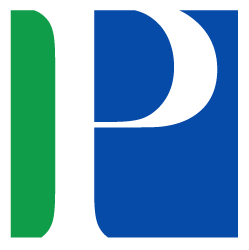The creation of innovative tourism products via local actor analysis and their organization in the territory
Abstract
Aim: This study’s overarching goal is to establish a theoretical foundation for reflection on Geo-tourism and its approach by assigning monetary values to territorial resources.
Method: We took a qualitative approach by reading up on related works, fads in the field, and prevailing tenets in the academic canon.
Findings: Tourism is one of the world’s fastest-growing economic sectors, thanks to decades of consistent growth and a greater diversity of offerings. Indeed, in recent years, geological tourism has emerged as an alternative that can be associated with classical tourism. This type of tourism involves the presentation of a territory’s geological and geomorphological heritage and draws attention to the region’s enormous geological and cultural diversity.
Implications/Novel Contribution: Our research contributes to an ongoing territorial project to organize these areas (what can be done? To what effect? Sales, functions). The transboundary and interregional nature of geological tourism is made possible through the exploitation, mobilization, and combination of these resources.
References
Barrere, H. (2005). Reinventing heritage: From culture to economy, a new thought of heritage? France, Paris:l’Harmattan Publisher.
Bellaoui, A. (2005). The voluntary commitment of young people and students. France, Paris: Edi L’Harmattan.
Bernoux, P. (1990). Sociology of organizations. Paris, France: Seuil Publication.
Campagne, P., & Pecqueur, B. (2012). Emergence process of rural territories in the mediterranean countries: Comparative analysis between 10 countries of the North, South and East Mediterranean. Options Méditerranéennes. Série B, Études et Recherches(69), 1-251.
Campagne, P., & Pecqueur, B. (2014). Le developpement territorial this is due to the globalization. Paris, France: ECLM Publisher.
Craigwell, R. (2007). Tourism competitiveness in small island developing states. New York, NY: WIDER Publication.
Crang, P., Dwyer, C., & Jackson, P. (2004). Transnational spaces. London, UK: Routledge.
Crozier, L., & Fredberg, H. (1992). The four dimensions of organized action. Revue Francaise de Sociologie, 33(4), 531-557.
Espino-Rodríguez, T. F., & Rodríguez-Díaz, M. (2008). Effects of internal and relational capabilities on outsourcing: An integrated model. Industrial Management & Data Systems, 108(3), 328-345. doi:https://doi.org/10.1108/02635570810858750
Gooroochurn, N., & Sugiyarto, G. (2005). Competitiveness indicators in the travel and tourism industry. Tourism Economics, 11(1), 25-43. doi:https://doi.org/10.5367/0000000053297130
Jebrati, F. (2004). The territorial mobilization of local development actors in the high atlas of Marrakech. Paris, France: Grenoble.
Latour, B. (2010). Coming out a philosopher. Social Studies of Science, 40(4), 599-608.
Mangion, M.-L., Durbarry, R., & Sinclair, M. T. (2005). Tourism competitiveness: Price and quality. Tourism Economics, 11(1), 45-68. doi:https://doi.org/10.5367/0000000053297202
Marcos, L. A., Terashima, A., DuPont, H. L., & Gotuzzo, E. (2008). Strongyloides hyperinfection syndrome: An emerging global infectious disease. Transactions of the Royal Society of Tropical Medicine and Hygiene, 102(4), 314-318. doi:https://doi.org/10.1016/j.trstmh.2008.01.020
Mazanec, J. A., Wöber, K., & Zins, A. H. (2007). Tourism destination competitiveness: From definition to explanation? Journal of Travel Research, 46(1), 86-95. doi:https://doi.org/10.1177/0047287507302389
Mollard, A., & Bernard, P. (2007). From the hypothesis to the model: A short history of a research work. Paru Dans Economie Rurale, 6(8), 293-315.
Organisation for Economic Co-operation and Development. (1999). OECD principles of corporate governance. Retrieved from https://bit.ly/32Tih8w
Perron, L., & Janin, C. (2014). Enhance the territorial resources: Keys to action. London, UK: Sage Publications.
Riordan, M. H., & Williamson, O. E. (1985). Asset specificity and economic organization. International Journal of Industrial Organization, 3(4), 365-378. doi:https://doi.org/10.1016/0167-7187(85)90030-X
Rotillon, G. (2010). Economy of natural resources. Paris, France: Reperes Publications.
Sen, A. (1979). Equality of what. Tanner Lecture on Human Values, 1(6), 56-70.
Stiglitz, J. F. (2000). Principles of modern economy. Michigan, MI: Walsh Publications.
Tatiyanantakul, W. (2017). Urban tour tets urban talk; guidelines for tourism promotion by cultural heritage on Urban landscape in Roi Et province, Thailand. Journal of Advanced Research in Social Sciences and Humanities, 2(4), 200-210. doi:https://doi.org/10.26500/jarssh-02-2017-0305
Weng, H. Y., & Yang, C. H. (2016). Culture conservation and regeneration of traditional industries derived by tourism factory-case study of Kwong xi paper factory in Taiwan. International Journal of Humanities, Arts and Social Sciences, 2(5), 172-180. doi:https://doi.org/10.20469/ijhss.2.20003-5
Yi-Hsien, H. (2019). Discussion on the professional function of the agent of creative design industry from the perspective of cultural capital: Take Taiwan’s interior design industry as an example. Journal of Advances in Humanities and Social Sciences, 5(4), 152-161. doi:https://doi.org/10.20474/jahss-5.4.1

This work is licensed under a Creative Commons Attribution-NonCommercial 4.0 International License.












.png)










